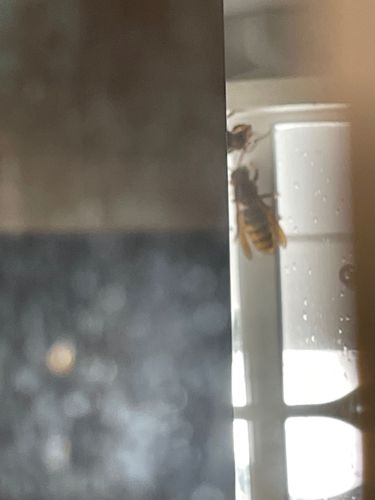Paper Wasp (likely European Paper Wasp)
Scientific Name: Polistes dominula (most likely, given commonality and appearance)
Order & Family: Hymenoptera, Vespidae
Size: 1.3 to 2.5 cm (0.5 to 1.0 inch)

Natural Habitat
Nests are often built in sheltered locations around human structures, such as under eaves, in attics, sheds, or even in natural cavities like hollow trees and shrubs. They prefer warmer climates.
Diet & Feeding
Adult paper wasps feed on nectar and other sweet liquids. They hunt insects, such as caterpillars and flies, to feed their larvae. They are also known to scavenge for food.
Behavior Patterns
Paper wasps are social insects that live in colonies, typically consisting of a queen, workers, and reproductives. They construct characteristic umbrella-shaped nests made from wood fibers mixed with saliva. While they are generally less aggressive than yellow jackets, they will sting if their nest is disturbed or if they feel threatened. They are active during the day.
Risks & Benefits
Risks: Stings can be painful and may cause allergic reactions in sensitive individuals. Benefits: They are natural predators of many garden pests, helping to control insect populations. They also contribute to pollination to a lesser extent when feeding on nectar.
Identified on: 9/22/2025